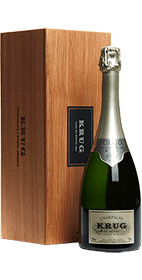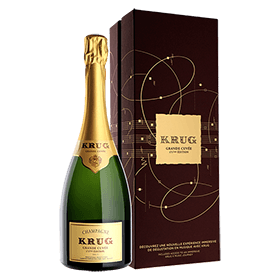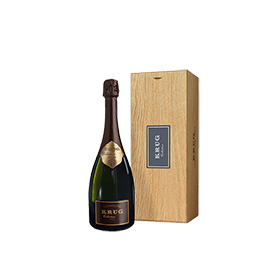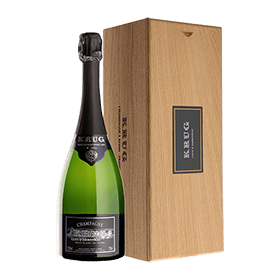Founded more than 170 years ago, in 1843, the House of Champagne Krug has remained faithful to the values of the visionary man who gave it birth: Joseph Krug. Throughout his life, this visionary man pursued a single goal: to offer, every year, beyond the vagaries of the climate, the most generous expression of Champagne.
The History of a Mythical House
Founded in 1843 by Joseph Krug, the House of Krug is based on a unique vision: to offer, every year, the most generous expression of Champagne, regardless of climatic variations. Visionary and against the grain, he built a repertoire of reserve wines, ensuring exceptional aromatic consistency and richness over the years.
From this approach, Krug Grande Cuvée, the House's signature, and the Vintage cuvée, revealing the singular character of a particular year, were born. For six generations, this heritage of excellence has endured, carried today by Olivier Krug, who continues the quest for emotion and perfection that has made Krug world-renowned.
Krug, the Art of Making Champagne
Entering the world of Krug means discovering a unique savoir-faire based on three essential principles: individuality, the art of blending, and patience.
Each champagne expresses the unique character of each plot, thanks to separate vinification in small oak barrels, preserving freshness and complexity. This approach allows for the creation of an exceptional library of reserve wines, comprising more than 150 wines from 10 to 12 different years. After months of tasting, the Cellar Master creates the final blend that will give birth to Krug Grande Cuvée or the Vintage cuvée, depending on the exceptional character of the year.
Finally, time shapes each cuvée, ensuring finesse and depth. Aged from 5 to 20 years, Krug champagnes stand out for their unique elegance and longevity. Produced in limited quantities, they perpetuate a family heritage and offer a memorable sensory experience.
Champagne Krug: Exceptional Cuvées, a Unique Identity
Tasting a Champagne Krug is a unique sensory experience where each cuvée tells its own story. Faithful to Joseph Krug's vision, the House does not rank its champagnes: each one has its own identity while bearing the imprint of its exceptional savoir-faire.
Grande Cuvée, the Most Generous Expression of Krug Champagne
A symbol of the House's savoir-faire, Krug Grande Cuvée is a blend of around a hundred wines from more than 10 vintages. Crafted each year to recreate the most generous expression of champagne, it offers an unparalleled aromatic richness, combining ripe fruits, hazelnut, brioche, and a delicate effervescence.
Vintage, the Unique Expression of a Remarkable Year
The expression of a single exceptional year, Krug Vintage is a unique interpretation of the climate and harvest of its vintage. Its aromatic complexity combines ripe fruits, spices, and toasted nuances, enhanced by a silky texture and remarkable length.
Krug Rosé, Between Finesse and Audacity
Elegant and audacious, Krug Rosé transcends the codes of rosé champagne. Its unique blend combines power and finesse, revealing aromas of red fruits, soft spices, and honey, carried by a refined structure and an effervescence of great delicacy.
Clos du Mesnil and Clos d’Ambonnay, Two Bottles of Great Rarity
Born from an exclusive chardonnay plot in Mesnil-sur-Oger, Clos du Mesnil embodies the purity and minerality of its terroir. Vintage-dated, it seduces with its crystalline finesse, complexity, and striking finish, all in tension and elegance.
Born from a small pinot noir plot in Ambonnay, Clos d’Ambonnay reveals remarkable depth and intensity. Its precise aromas of black fruits, cocoa, and toasted bread develop in a silky texture, prolonged by a captivatingly persistent finish.
























